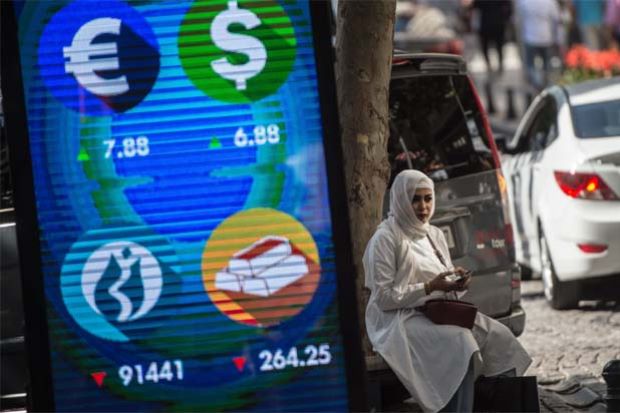Malaysia: Bracing for a difficult 2019
THE pressures keep piling even as emerging markets (EMs) take in more punches from increasing tariff turmoil, strong dollar and drying up of liquidity.
As though investors have not been sufficiently pummeled in the China markets, the brewing financial crisis in Turkey is causing risk version in EMs, and leading to Germany’s call for Turkey to seek help from the International Monetary Fund.
A fresh round of currency plunges in the lira, rupiah and rupee have led to renewed fears of an EM debt crisis although currently, the problems in Turkey are viewed as endemic.
The ringgit, steady as it had been, has slipped against worries it may overshoot from the real effective exchange rate (REER which measures a country’s currency against the basket of its trading partners).
“With the current REER at 4.09 to 4.10 against the dollar, past performance shows a possible overshooting by 30 sen,” said Pong Teng Siew, head of research, InterPacific Securities.
In the near term, AmBank Research expects ringgit volatility at 1% to 2% with a near term threshold of 4.15 against the dollar. Ongoing efforts to stabilise the lira will be crucial in the recovery of EM currencies which will still be pressured by the US rate hike path.
With lira stabilisation, the climb on the dollar as safe haven currency may slow down, and the ringgit may stabilise at 4.00 to 4.05 to the dollar by year-end.
After gaining 4.8% in the first quarter, the ringgit has weakened by 5.9% since end-March to Aug 15. Year-to-date, there has been a marginal cumulative appreciation of 1% in the ringgit, which is undervalued by 6%.
Prospects for the ringgit may improve if dollar appreciation loses some steam as issues resurface in the form of US twin deficits in fiscal and current accounts and US yield curve inversion that usually signals a recession.
Locally, factors that support the ringgit will be strong fundamentals, clarity of policies, fiscal and debt management as well as affirmation of sovereign ratings.
Currently, there is a lack of clarity on Turkey and China, a toxic combo, that can threaten EMs. The US has threatened more sanctions on Turkey if it does not release Pastor Andrew Brunson whose appeal for release was rejected by the Turkish court. The lira which had stabilised on central bank measures and Qatari support, subsequently dropped 5%.
China is preparing to hold low-level trade talks with the US which is asking for more concessions at the bargaining table. While there is some cynicism on these ‘talks on trade talks”, there is hope for some success before President Donald Trump and President Xi Jinping meet in November at the G20 summit.
Complicating these talks is the larger technology agenda. As liquidity dries up, investors will become increasingly sensitive to shocks; 2019 will be a year of financial and trade tension, when strategies may be thrown off balance.
Despite the slowdown, there is still a lot of momentum in the global economy and shifting trade flows will benefit other economies.
But we cannot wait to see the net result of this; governments and central banks must act proactively under different scenarios, to address possible risks.
While we strengthen our existing businesses and trade arrangements, we must enhance our resilience to shocks like this second round of lira plunge, and disruptions from further withdrawal of liquidity from the Federal Reserve and later, potentially the European Union.
“We need comprehensive measures to raise our potential output and ensure the benefits are shared by all,’’ according to AmBank Research chief economist/head Anthony Dass.
As our exports will be affected by weak demand and supply chain disruptions, we must strengthen domestic demand through selective fiscal spending, and assist the lower income groups.
We should spur domestic investment and attract foreign direct investment in technology and knowledge-based industries.
“So, we must lower the cost of doing business and improve competitiveness,’’ said Socio Economic Research Centre executive director Lee Heng Guie.
Fairly positive expectations will buoy hopes in the markets which look toppish. Investors plan six to 12 months ahead, and Hong Leong Bank chief operating officer, global markets, Hor Kwok Wai expects sentiment to improve by middle of next year.
There may not be a broad-based stockmarket rally, and Fortress Capital CEO Thomas Yong considers potential in good stock picks.
Locally, there are segments of opportunities like banks on Bursa Malaysia, Public Investment Bank head of research Ching Weng Jin said, but globally markets need fresh catalysts (and not more shocks).
Hopefully, 2019 will bring something new, and not the same miserable tunes of trade wars and tariffs.
Source: https://www.thestar.com.my/business/business-news/2018/08/20/bracing-for-a-difficult-2019/#JBhzrFg6TCQX247p.99


 Thailand
Thailand




